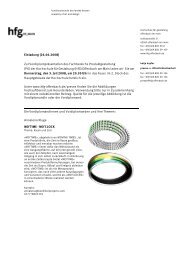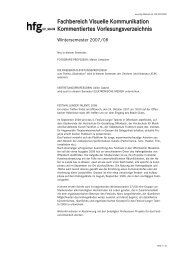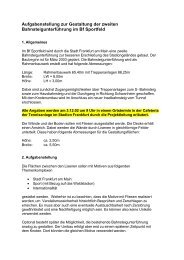User Manual
User Manual
User Manual
You also want an ePaper? Increase the reach of your titles
YUMPU automatically turns print PDFs into web optimized ePapers that Google loves.
1 2<br />
3<br />
4<br />
5<br />
6<br />
New metered area is 1.8 EV lower than the area metered<br />
when the AE-L button was pressed.<br />
AE-L button pressed to call the metered area ‘Zone 5’.<br />
Metered area reads ‘Zone 8’.<br />
Metered area above ‘Zone 10’.<br />
84<br />
AE- L button 1, 2, 3, 4, 5, 6<br />
This button has two main functions that can be incorporated in<br />
various working methods involving exposure locking. It also has<br />
an extra function for the flash meter capability (see AE-L section<br />
under Flash). The AE-L button can:<br />
a) lock an EV setting in manual and automatic modes.<br />
b) be used as a Zone System placement button.<br />
a) When the button is pressed (fig 1), the light metering facility is<br />
locked to the EV setting at that moment. An L (= locked) symbol<br />
appears between the shutter speed and the aperture indication (fig<br />
2) on the grip display and viewfinder display to confirm the status.<br />
Press the AE-L button again to unlock (toggle function).<br />
In the locked setting, the aperture and shutter speed become<br />
interlocked. In this way, a new aperture/shutter combination that<br />
still represents the same EV, can be rapidly chosen. For example,<br />
if you set the shutter at 1/125s and the aperture at f/8 and lock<br />
them together, you can access new EV-equivalent combinations<br />
of, for example, 1/30s a f/16 or 1/500s at f/4 just by moving the<br />
front control wheel.<br />
In practice this means you could, for example, in auto mode, position<br />
the metering area (spot setting) over an area in the subject<br />
that you determine to be equivalent to a mid-grey and lock it with<br />
the AE-L button. You can then recompose the picture with the<br />
metering zone positioned over an area much brighter or darker<br />
while still retaining the original exposure setting and choose a new<br />
combination of aperture and shutter speed settings.<br />
b) The AE-L button also allows the spot metering function to make<br />
zone placements. When the AE-L button is pressed, the metered<br />
area is saved as a mid-grey (Zone 5). When the spot area is then<br />
placed over another part of the scene, the new area is then compared<br />
to the saved area and the difference can be read off the scale<br />
seen in the viewfinder. For example, in a landscape situation you<br />
could meter the foreground, lock the reading with the AE-L button<br />
(thereby locking that area to be reproduced as the equivalent to a<br />
mid-grey 18%), point the camera at some rocks to see by how much<br />
darker they are compared to the foreground by the EV difference<br />
read off the scale (illus 3).<br />
If you have chosen Spot together with Zone display (see ‘Custom<br />
options’ for settings and ‘Zone’ in the Appendix for further information<br />
about the zone system.) as well as one of the automatic<br />
modes A, S, P or Pv, point the spot marking at an area that you<br />
decide should be a Zone 5 and click the AE-L button (illus 4). The<br />
meter will now display different parts of the subject as zone values<br />
(illus 5) in the viewfinder display, instead of EV deviations, as you<br />
move the spot marking over the subject. (Included are Lo and Hi<br />
(illus 6)to signify areas beyond the range of the sensor).<br />
Alternatively you can choose to re-classify an area as another zone<br />
and then check the rest of the subject to see how other areas fall<br />
on the zone scale. Do this by following the above procedure and<br />
then turning the rear control wheel until you see the new desired<br />
zone value in the viewfinder display. You will also see the new<br />
exposure that will now produce that new zone. For example, you<br />
might have measured a rock at zone 5 but wish to make it darker.<br />
By moving the rear control wheel you could re-classify it as zone<br />
4. You will then be able to see, for example, whether white clouds<br />
are now falling within the exposure range by their new Zone<br />
classification.



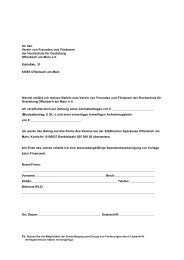
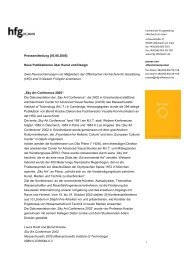

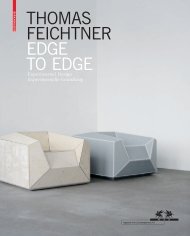
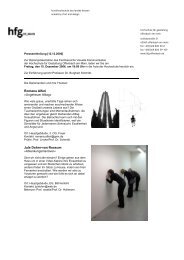

![Einladung [07.02.2006] - Hochschule für Gestaltung Offenbach am ...](https://img.yumpu.com/13375413/1/184x260/einladung-07022006-hochschule-fur-gestaltung-offenbach-am-.jpg?quality=85)

